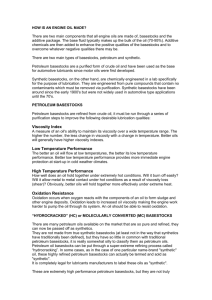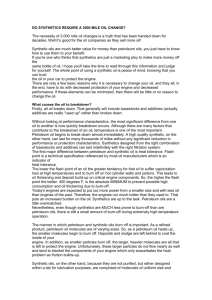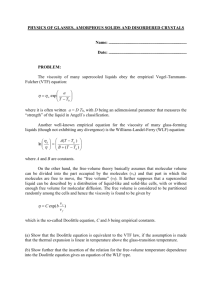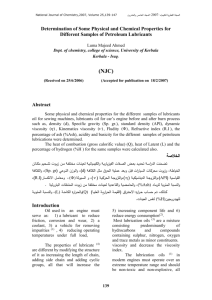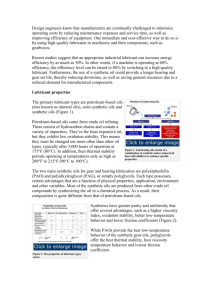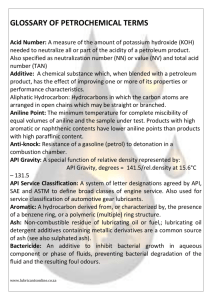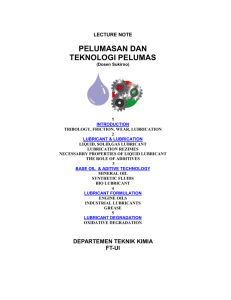By Kevin Cameron 46 Comments Question: I have been reading
advertisement
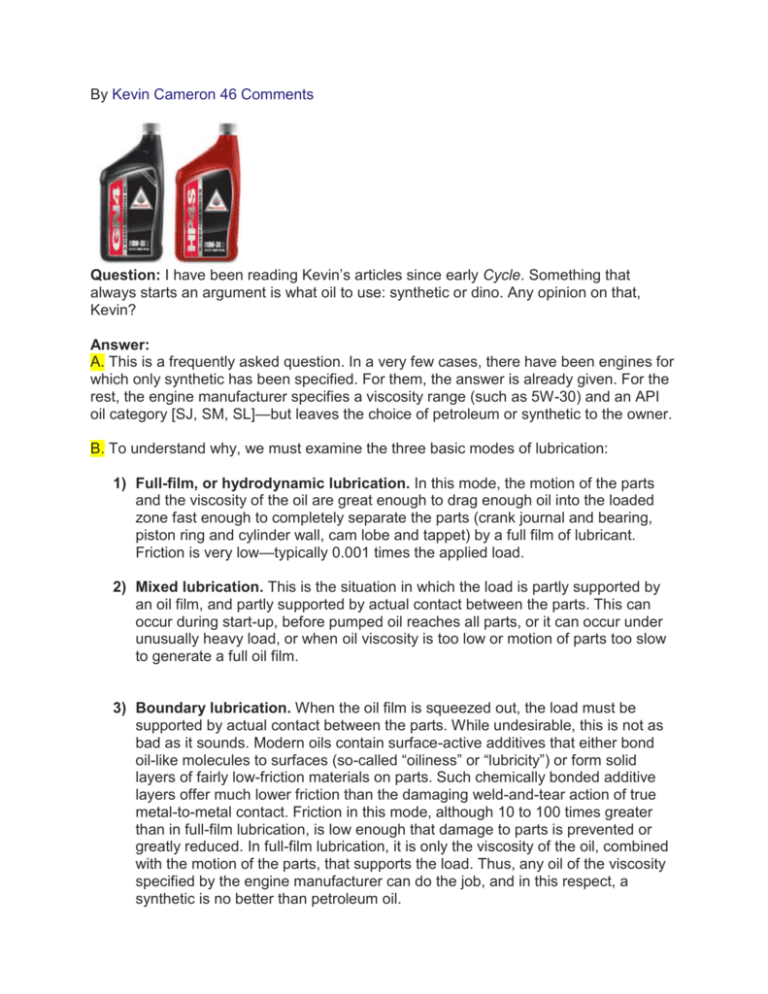
By Kevin Cameron 46 Comments Question: I have been reading Kevin’s articles since early Cycle. Something that always starts an argument is what oil to use: synthetic or dino. Any opinion on that, Kevin? Answer: A. This is a frequently asked question. In a very few cases, there have been engines for which only synthetic has been specified. For them, the answer is already given. For the rest, the engine manufacturer specifies a viscosity range (such as 5W-30) and an API oil category [SJ, SM, SL]—but leaves the choice of petroleum or synthetic to the owner. B. To understand why, we must examine the three basic modes of lubrication: 1) Full-film, or hydrodynamic lubrication. In this mode, the motion of the parts and the viscosity of the oil are great enough to drag enough oil into the loaded zone fast enough to completely separate the parts (crank journal and bearing, piston ring and cylinder wall, cam lobe and tappet) by a full film of lubricant. Friction is very low—typically 0.001 times the applied load. 2) Mixed lubrication. This is the situation in which the load is partly supported by an oil film, and partly supported by actual contact between the parts. This can occur during start-up, before pumped oil reaches all parts, or it can occur under unusually heavy load, or when oil viscosity is too low or motion of parts too slow to generate a full oil film. 3) Boundary lubrication. When the oil film is squeezed out, the load must be supported by actual contact between the parts. While undesirable, this is not as bad as it sounds. Modern oils contain surface-active additives that either bond oil-like molecules to surfaces (so-called “oiliness” or “lubricity”) or form solid layers of fairly low-friction materials on parts. Such chemically bonded additive layers offer much lower friction than the damaging weld-and-tear action of true metal-to-metal contact. Friction in this mode, although 10 to 100 times greater than in full-film lubrication, is low enough that damage to parts is prevented or greatly reduced. In full-film lubrication, it is only the viscosity of the oil, combined with the motion of the parts, that supports the load. Thus, any oil of the viscosity specified by the engine manufacturer can do the job, and in this respect, a synthetic is no better than petroleum oil. C. On the other hand, viscosity is not a permanent, unvarying property. Viscosity varies with temperature, and the rate at which viscosity drops as temperature rises is called its viscosity index. Multi-grade oils are made by adding to a base oil substances that alter its viscosity index. My parents had trouble starting their car in 1950s winters because its straight 30-weight oil became so viscous at low temperature that its 6V starter motor could barely turn the engine. A multi-grade oil—say, a 10W-40—begins as a singlegrade base oil that at 0 degrees F acts like a 10-weight oil, but as oil temperature rises to 212F, it acts like a 40-weight. This does not mean that its viscosity increases as it gets hotter—only that it loses viscosity as if it had started as a 40-weight rather than as a 10-weight. D. The oil viscosity spec on the bottle or jug thus describes how the oil acts in winter at 0 degrees (that is the ‘10W’ in 10W-40) and how it acts in a hot engine at 212 degrees (that is the ‘40’ in this case). Oil molecules are long hydrocarbon chains. The usual explanation of the difference between synthetic and hydrocarbon oils is that hydrocarbon molecules are as different as the personnel in a real army, while a synthetic is like an army of clones—all identical. E. But there is more. Oil molecules are gradually broken into shorter fragments by highshear situations (meshing gear teeth, oil pressure relief valves), resulting in the phenomenon of permanent viscosity loss (the shorter the average oil molecule length, the lower the oil’s viscosity). A synthetic oil may resist this viscosity loss better than most petroleum oils, but remember—all oils are long-chain hydrocarbons, whether they come out of the ground or are chemically synthesized from simpler molecules. Oils are not magic. Petroleum oils are highly refined with the very same goal that synthetics aim at—molecular uniformity and durability. F. The oil change intervals specified in the owner’s manual are chosen to take permanent viscosity loss into consideration. Despite this, there remain many people (including dealers!) who are sure oil should be changed every 3000 miles or more often. G. WHERE DO SYNTHETICS EXCEL? The special area in which synthetics excel is temperature tolerance. In the early days of jet engines, only petroleum-based oils were available to lubricate their hot-running shaft bearings and accessory drives. As jet engines developed, bulk oil temperature rose, and heat degradation of petroleum oils became a problem as heat either broke oil molecules into shorter lengths or polymerized them into gums or varnish. H. A variety of synthetic oils were evaluated as replacements, and diesters were chosen as the base for new turbine oils. Since then, even higher bulk oil temperatures have required use of synthetics with more heat-durable structures—such as the neopentyl polyol esters. The higher the bulk oil temperature, the more valuable an appropriate synthetic becomes. This means that a pedestrian family car, towing a heavy vacation trailer at high speed across the Southwest in summer, may have more need of synthetic oil than do the majority of motorcycles (many of which have effective oil coolers). I. Certain synthetics proved usable as base stocks in motor vehicle engines. However, the additive packages developed for petroleum oils were in some cases incompatible with the new synthetics. As a result, some new chemistry was required to make the necessary active ingredients remain reliably in solution in synthetics. This makes it possible for a petroleum oil with a well-developed additive package to perform better than a synthetic with a lower-priced additive package. The API (American Petroleum Institute) oil category, such as SJ (appearing on bottle), specifies that the oil passes a particular set of test standards for such things as anti-wear, lubricity, oxidation resistance, dispersance, anti-corrosion, etc. These special properties are provided by the oil’s additive package, and not in general by the oil. J. What it comes down to is this: If your owner’s manual does not specify synthetic oil only, it’s up to you. Some riders feel they must “do something” for their engines and gladly pay high prices for synthetic and/or for more frequent oil changes. It makes them feel good and certainly does their engines no harm. Others will shrug at such practices and be happy with any oil that meets the spec in the manual—a spec that has been worked out by the engine manufacturer through a rigorous program of oil testing. Most engine wear takes place in the first minutes after cold-starting, as a result of the time it takes for oil to circulate to all parts. Thus wear prevention is mainly a function of the additive package, and not of the molecular origin of the oil itself. Send your “Ask Kevin” questions to cwservice@cycleworld.com.


